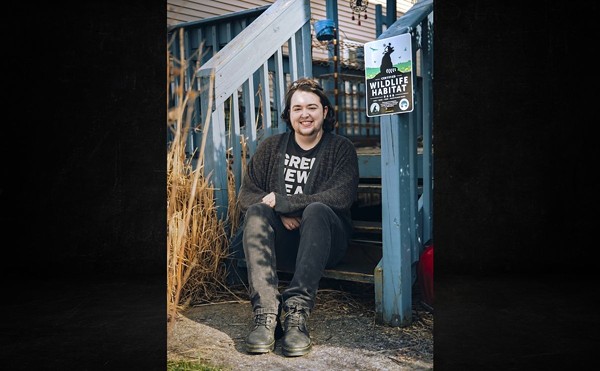Critic's Pick
At just 15 photos, Beyond Pictorialism: The Photography of Doris Ulmann at Over-the-Rhine’s designsmith gallery is one of the largest exhibitions mounted in the past 15 years of this little-known photographer’s work. The exhibition reveals Ulmann’s historical and aesthetic significance through 12 portraits and three architectural photographs and demonstrates how she bridged two important photographic movements. Most of all, it provides a wonderful introduction to an underrepresented artist.
Ulmann was trained as a pictorialist in the early 20th century. The pictorialists strove to elevate photography to the status of high art by creating photographic images that emulated paintings. Great examples of the hallmarks of pictorialism — soft focus, subtle contrasts and impressionistic printing methods — can be seen in the exhibition.
Ulmann moved toward documentary photography, which is typically seen as the antithesis of pictorialism’s misty artifice. But, according to the exhibition’s curator David Smith, “Even as her vision became more documentarian, she continued to rely upon her pictorialist techniques and training.”
Most people have heard of Dorothea Lange or have seen her well-known photograph of a migrant worker mother and her children. Lange and several other photographers were part of the Farm Security Administration (FSA) photography program, which exposed the effects of rural poverty during the Great Depression. Ulmann had been making such photographs since around 1920, but died in 1934, just one year before the FSA was formed. If she had lived and been appointed as an FSA photographer, it’s possible her name would now be uttered alongside the likes of Lange, Walker Evans or Gordon Parks, even though she did not embrace their straight, documentarian style.
In the 1920s and ’30s, Ulmann set out on long expeditions to photograph what she referred to as “vanishing types.” The craftspeople of Appalachia, the African-American Gullah culture of South Carolina’s Sea Islands, the Pennsylvania Dutch and other rural peoples became her favorite subjects.
Ulmann’s companion, noted Folk singer and composer John Jacob Niles, accompanied her on expeditions through Appalachia. While serving as her assistant, he transcribed and collected traditional American ballads. The anonymous collector of the works in this exhibition obtained them directly from the Niles estate in 1994.
One of the most compelling photos in the show, “Appalachian Woman on Porch,” documents the signs of a long, hard life, aestheticized in the pictorial mode. The old woman’s face is furrowed with lines, her eyes puffy and lips sunken. She wears a simple striped cotton dress. Yet, she is posed like a proud aristocrat. Seated before leafy garden foliage, holding an open fan at her waist and gazing off to the left, she looks like an un-idealized sitter in a formal painted portrait. Such marriages between the documentary and pictorial styles make Ulmann’s work fascinating.
In addition to intriguing subject matter, Ulmann’s hand is present throughout. All photos in the show are original and still on the artist’s mounts. She rarely printed more than one photograph from each glass negative, made using a cumbersome large-format view camera she lugged around on expeditions with the help of assistants.
Of the approximately 10,000 platinum prints Ulmann made, she produced around 150 one-of-a-kind oil pigment prints, three of which are on display in the show. Two photos of the same subject — an elegant building faade — allow viewers to compare the different effects of platinum versus oil pigment prints. I yearned for these to be hung side by side so my eyes could bounce back and forth to compare techniques. Instead they flank the exhibition, serving as parenthesis around the heart of Ulmann’s work — her sensitive, captivating portraits of rural Americans.
BEYOND PICTORIALISM is on view at designsmithgallery through Nov. 22. Get gallery details and find nearby bars and restaurants here.





